In construction engineering, environmental monitoring, and agricultural production, the soil sampler (also referred to as a soil core sampler/soil collection tool) is an indispensable professional instrument. It leverages specialized structural designs and sampling technologies to extract representative soil samples from different depths of the ground efficiently and reliably, without disrupting the natural structure and composition of the soil. Furthermore, it can collect samples tailored to specific research needs—such as undisturbed soil samples for physical property analysis or composite samples for nutrient detection. This non-destructive (or minimally destructive) sampling method is extensively used in construction site soil surveys, ecological environment assessment, and farmland soil fertility testing, greatly improving the accuracy, efficiency, and scientificity of soil-related work.
In this blog by sisco.com, we will thoroughly elaborate on the definition, main types and application scenarios, and working principles of soil samplers and operating procedure to helping readers establish a comprehensive and systematic understanding of this essential tool. You can also click on the table of contents links to jump to the sections you're interested in.
Content
Main Types and Application of Soil Samplers
Working Principles of Soil Sampler
Procedure and Precautions for Using Soil Samplers
Definition of a Soil Sampler
A soil sampler is an instrument that relies on purpose-built structural configurations and dedicated sampling techniques. Its structural designs include auger-type, piston-driven and tubular styles, and it extracts soil samples from various subsurface depths through non-destructive or low-destructive approaches. This tool facilitates the precise collection of representative soil specimens and can yield vital soil-related data.
For example, it can obtain samples tailored to analyzing soil texture, nutrient levels, pH balance or contaminant makeup. It also collects undisturbed soil samples, which are used to examine soil physical characteristics like bulk density and pore space.
In turn, this delivers essential information for multiple application: soil surveys at construction sites (to gauge foundation stability), environmental surveillance (to determine soil contamination levels), agricultural activities (to develop fertilization strategies) and ecological studies (to assess the health of soil ecosystems). Ordinarily, soil samplers are compatible with most soil categories, such as sandy soils, loamy soils and clayey soils. Under specific circumstances, however—like when dealing with highly compacted soil or soil with a high gravel content—they can still accomplish sampling tasks by pairing with compatible attachments. By adopting non-invasive or minimally invasive sampling methods, the natural structure and composition of the soil are maintained. At the same time, this approach greatly boosts the precision and efficiency of soil investigation work.
Main Types and Application of Soil Samplers
There is a wide variety of soil samplers, and different types can meet the work requirements of various scenarios. Below is an introduction to some main types of soil samplers and their suitable application scenarios.
Handheld Soil Auger Sampler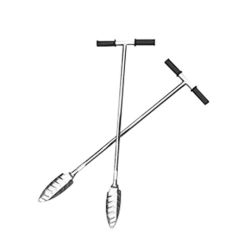
It is a lightweight, manual-operated tool featuring a spiral metal drill bit and an ergonomic handle, allowing users to complete sampling by rotating the handle without external power. Handheld soil auger sampler is mainly applied to shallow soil sampling (usually less than 1 meter) in small-scale scenarios such as home gardens, urban green belts and small farmlands, and is often used for rapid detection of soil nutrient content, pH value or organic matter content to guide daily fertilization or plant selection.
Piston-Driven Soil Sampler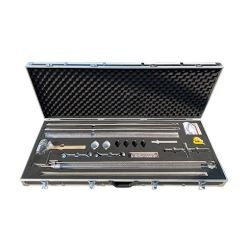
It consists of a thin-walled sampling tube and a movable piston inside the tube, which maintains pressure balance during sampling to avoid compaction or deformation of soil particles. Piston-driven soil sampler is mainly applied to laboratory analysis scenarios that require high sample integrity, such as environmental monitoring of wetland ecosystems, geological research on soil layer structure, and agricultural scientific experiments—these scenarios need to study the original physical properties of soil (like bulk density, porosity and water retention capacity) to obtain accurate research data.
Electric Soil Sampler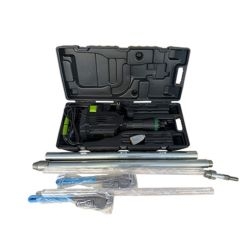
It is a power-driven sampling device equipped with a high-torque motor and replaceable drill bits, which can quickly penetrate different types of soil (including moderately compacted loam and sandy soil) and greatly reduce manual labor intensity. Electric soil sampler is mainly applied to medium-deep soil sampling (1-5 meters) in large-scale scenarios such as large farmlands, construction site pre-survey areas and regional ecological investigation projects, and is suitable for batch sampling tasks that require high efficiency and consistent depth, such as soil fertility mapping of farmlands or foundation soil stability testing of construction projects.
Tubular (Core) Soil Sampler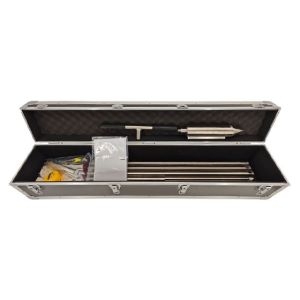
It uses a hollow, sharp-edged metal tube as the core component—its sharp lower edge can cut through soil layers cleanly, and the smooth inner wall prevents soil from adhering and losing components, ensuring the collected soil core maintains a complete layered structure. Core soil sampler is mainly applied to general-purpose sampling scenarios that balance efficiency and sample quality, such as agricultural soil texture analysis (to distinguish sand, silt and clay proportions), road construction soil layer thickness detection, and preliminary screening of soil pollution in industrial surrounding areas, meeting the basic testing needs of multiple fields.
Heavy Metal Soil Sampler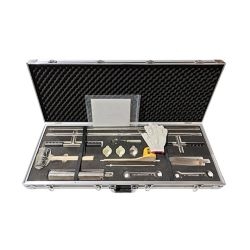
It is a dedicated sampling tool with anti-contamination design—its sampling parts are usually made of corrosion-resistant materials (like 316 stainless steel) that do not react with heavy metals, and it needs to be strictly cleaned before use to avoid cross-contamination. The sampler machine for the soil heavy metals is mainly applied to soil heavy metal detection in pollution-sensitive scenarios such as industrial contaminated sites, mining waste areas and farmlands near chemical plants, and is used to accurately collect soil samples for laboratory testing of heavy metal elements (like lead, cadmium and arsenic) to assess soil pollution levels and formulate remediation plans.
Working Principles of Soil Sampler
Soil samplers, regardless of their specific type, follow a set of shared working principles—all centered on accurately fetching soil from target depths while keeping the soil’s original state as intact as possible. These core logics ensure the collected samples can truly reflect the actual conditions of the subsurface soil, laying a reliable foundation for subsequent tests.
Targeted Depth Control
First, they all rely on targeted depth control to get soil from the right layer. Whether it’s manual operation or mechanical drive, the sampler will be guided to reach the preset depth—for example, 15-20cm for agricultural topsoil (where crop roots mainly absorb nutrients) or deeper layers for construction foundation surveys. This avoids mixing soil from different depths, which would make the sample unrepresentative.
structural design
Second, they use structural design to reduce soil disturbance during contact and collection. For instance, sharpened edges on tubular or auger bits help cut through soil smoothly without crushing soil particles; smooth inner walls of sample tubes prevent soil from sticking and losing components; some even use pressure balance to avoid compressing soil. These designs all aim to keep the soil’s texture, composition, and physical properties (such as porosity) the same as they are underground.
Reliable Sample Retention
Third, they have a reliable sample retention mechanism to prevent loss during extraction. When pulling the sampler out of the ground, structures like spiral grooves on augers or sealed cavities in tubes hold the soil tightly, so it won’t fall back into the sampling hole. This ensures the entire collected soil volume is brought to the surface for subsequent use.
In short, the common working principle of soil samplers is to “get the right soil from the right place, and keep it as it is”—a balance between efficient collection and sample integrity, which is key to making soil test results scientific and usable.
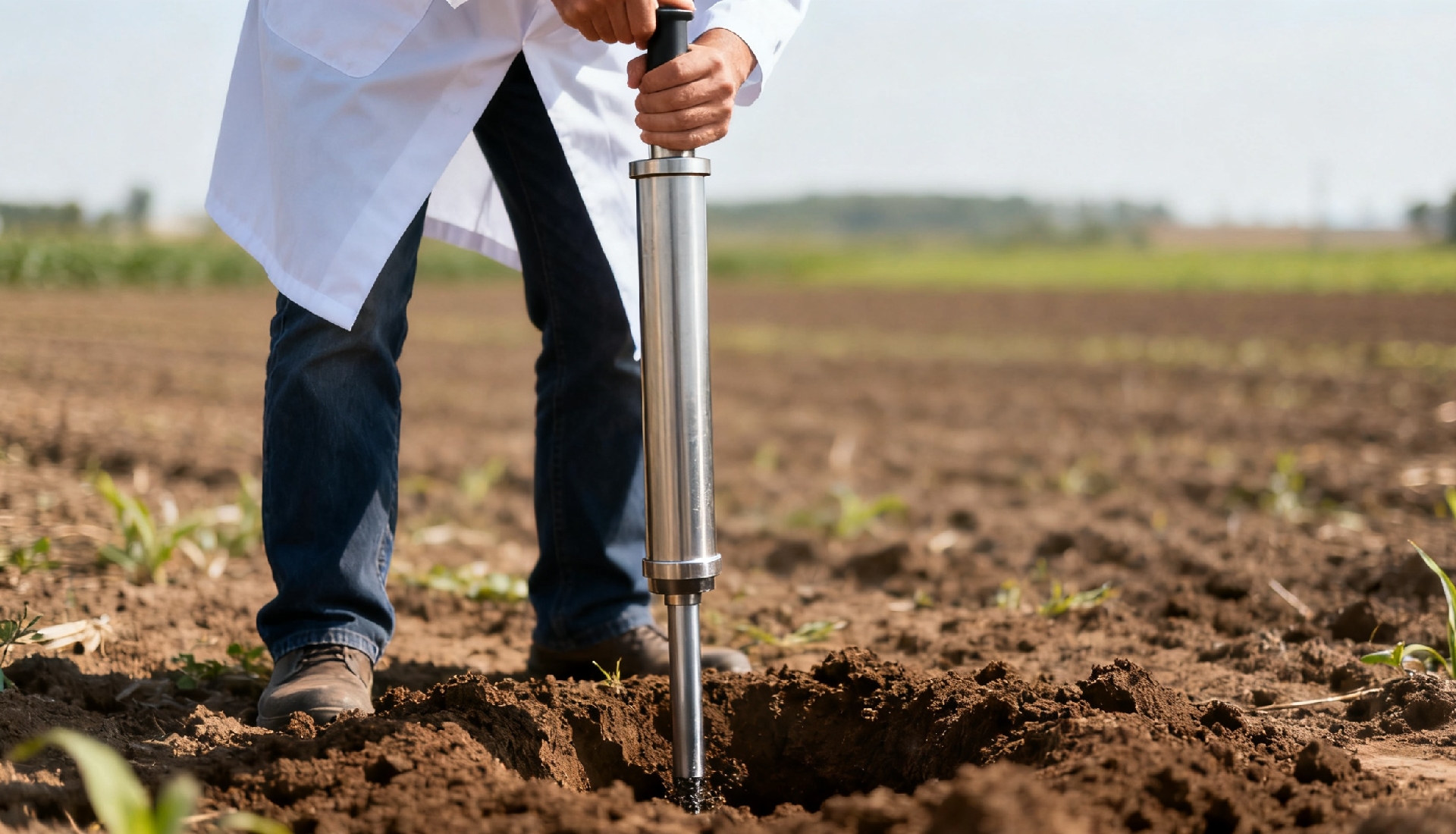
Procedure and Precautions for Using Soil Samplers
To ensure the proper use of soil samplers and obtain test data efficiently and accurately, SISCO provides the following recommendations regarding usage procedures and precautions:
- Sampler Preparation & Parameter Confirmation: Inspect the soil sampler’s components (e.g., drill bits, sample tubes, piston rods) for damage or contamination, and clean them thoroughly to avoid cross-pollution. Confirm the target sampling depth based on the task (e.g., 15–20cm for agricultural topsoil, 1–3m for construction surveys) and assemble matching accessories (e.g., reinforced bits for compacted soil).
- Sampling Site Preparation: Clear the sampling area of debris, weeds, or surface residues that may interfere with sampling. Avoid abnormal spots like fertilizer accumulation zones, root clusters, or puddles. For large-scale surveys, divide the area into uniform sub-zones and mark each sampling point to ensure coverage representativeness.
- Sampling Execution: Position the sampler vertically at the marked point, then drive it into the soil (manually rotate for handheld augers, activate power for electric models) until reaching the preset depth. During penetration, maintain steady force or speed to prevent soil layer mixing. Once at depth, pause briefly, then pull the sampler out vertically to avoid sample deformation.
- Sample Collection & Labeling: Empty the collected soil from the sampler into a clean, dry container (e.g., sterile plastic bag, glass jar). For composite samples, mix 5–10 subsamples from the same sub-zone evenly before portioning. Label the container clearly with key info: sampling date, location, depth, soil type, and task purpose (e.g., "2024-10-06, Farm A Zone 3, 20cm depth, for nutrient analysis").
- Post-Sampling Arrangement: Seal the labeled soil samples and store them in a cool, dry environment to prevent moisture loss or microbial deterioration. Clean the sampler again after use and store it properly. Organize sampling records (e.g., site photos, depth logs) and deliver samples to the laboratory within 24–48 hours for subsequent testing.
Following a professional soil sampling workflow is crucial for obtaining accurate data to support decisions in agriculture, environmental monitoring, or construction. If you wish to purchase soil samplers in SISCO online store or learn more about related information, please feel free to visit our store or blog. We hope you find the ideal product you're looking for!

